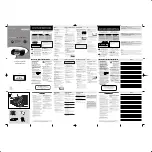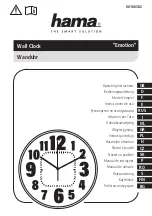
Appendix B
Using Surge Arresters
B.1
Introduction
These instructions cover the installation of the Arbiter Systems Model AS0094500, Surge Arrester.
The AS0094500 performs two basic functions:
1. Provides a solid and reliable grounding point for the antenna system connected to a GPS
receiver;
2. Protects connected equipment from the damaging effects of atmospheric static electricity and
induced voltage spikes from nearby lightning strikes or other electrical events.
B.2
Description
The AS0094500 is a three-terminal device with two type F connectors and one ground terminal.
One of the F connectors connects to the GPS antenna and the other F connector to the GPS
receiver in the clock. A screw terminal provides a point to connect an earth ground wire. Being
weatherproof, the AS0094500 can be mounted outdoors provided that the cabling and Type F
connectors are sealed from the weather. The device will also pass the DC current necessary to
energize the GPS antenna.
B.3
Installation
B.3.1
Mounting Location
Location is a key consideration when installing the Model AS0094500. Mount as close as possible
to a good earth ground, such as a grounding rod or station ground grid. The shorter the path
between the arrester and the earth ground, the more effectively and reliably it will bypass the
induced voltages.
B.3.2
Ground Connection
The Model AS0094500 can be grounded in two ways: (1) via the ground-wire screw connection, or
(2) by hard-mounting directly to a grounded metal surface.
Summary of Contents for 1084A
Page 4: ...iv ...
Page 6: ...vi ...
Page 18: ...xviii LIST OF FIGURES ...
Page 24: ...4 Unpacking the Clock ...
Page 36: ...16 Connecting Inlet Power Input and Output Signals ...
Page 44: ...24 GPS Antenna and Cable Information ...
Page 114: ...94 Startup and Basic Operation ...
Page 123: ...B 4 Physical Dimensions 103 Figure B 1 Suggested Mounting of the AS0094500 Surge Arrester ...
Page 124: ...104 Using Surge Arresters ...
Page 134: ...114 Options List C 6 2 Option 06 Firmware Setup Figure C 3 Option 06 Firmware Setup ...
Page 142: ...122 Options List Figure C 5 Option 06 Output Jumper Settings ...
Page 158: ...138 Options List Figure C 13 Option 17 Board Layout and Jumper Locations ...
Page 163: ...C 13 Option 20A Four Fiber Optic Outputs 143 Figure C 14 Option 20A Jumper Locations ...
Page 170: ...150 Options List Figure C 16 Option 23 Internal Jumper Setup ...
Page 172: ...152 Options List Figure C 17 Option 27 Jumper Locations ...
Page 190: ...170 Options List Figure C 20 Option 29 Connector Signal Locations ...
Page 246: ...226 Options List ...
















































